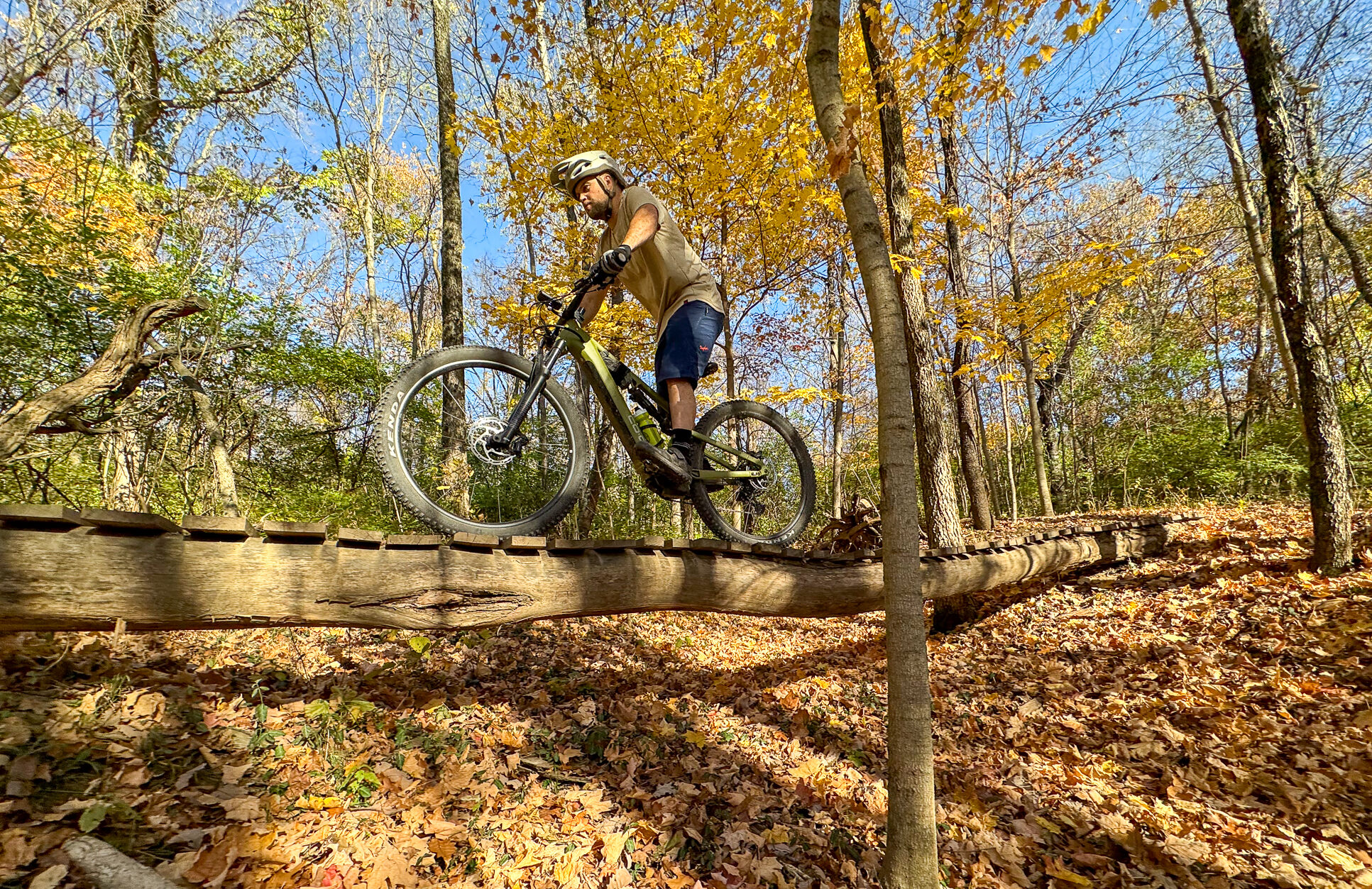At this point, REI is a name that is synonymous with outdoor adventures. However, when it comes to ebikes, it might not be a brand that comes to mind. Much less when it comes to eMTB. But their Co-Op bike brand has been releasing some interesting bikes over the past few years, so when they offered a chance to review their first-ever REI eMTB, I jumped at the chance.
Why? Mostly it was because I hadn’t ridden the latest generation of Bosch ebike motors with the smart system. But also because the REI Co-Op DRT e3.1 seemed like an impressive value – despite the name having too many letters and numbers. In my head, I just call it the ‘Dirty 3.1’.
Priced right at $5k for the complete bike, there aren’t many Bosch-equipped bikes with similar battery sizes and build levels at this price point. Going into the review I expected there would be a few low spots in the build, but in the end, the bike was far better than anticipated.
Bosch eBike System
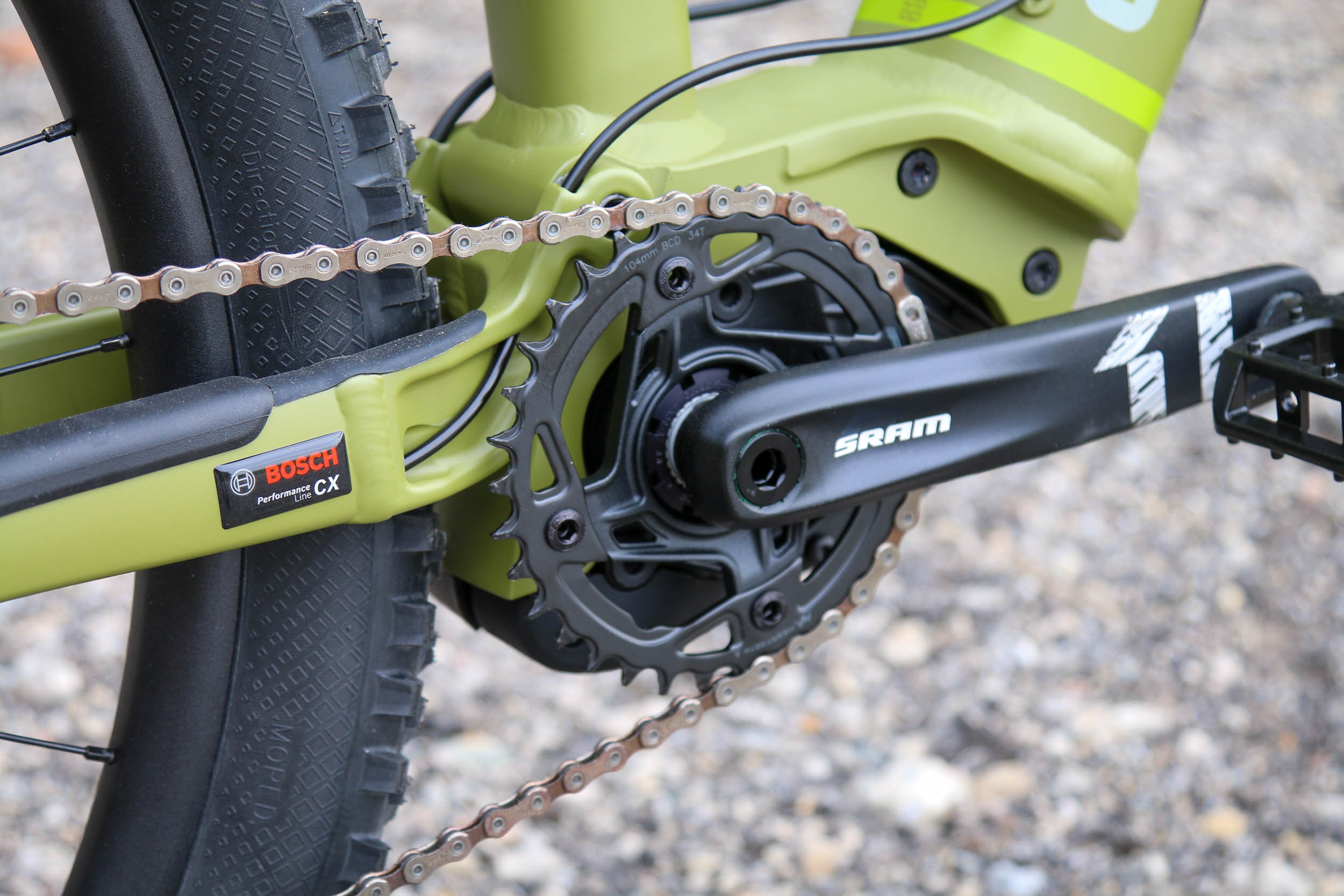
At the heart of the DRT e3.1 is the Bosch Performance Line CX mid-drive motor with the Smart System. The motor offers 85Nm of torque making this a ‘full power’ ebike. Officially, it’s a Class 1 with pedal assist up to 20 mph. You can still go more than 20mph, but at that point, it will be only under human power.
Along with the motor, the battery is a key component spec when shopping for ebikes. The DRT e3.1 doesn’t have the biggest battery, but the 625wh battery stashed in the downtube is adequate for all but the longest rides. We’re told that currently, the bike is not compatible with the Bosch range extender battery though, so keep that in mind. As Bosch explains it, the charging plug is compatible with the range extender, but REI has to certify that the water bottle bosses are strong enough to support the weight of the battery. It’s possible that it may be certified in the future, but is not at this time. The battery is easily swapped with the keyed frame lock though, so trail-side battery swaps are a possibility if you purchase a spare battery.
Flow App
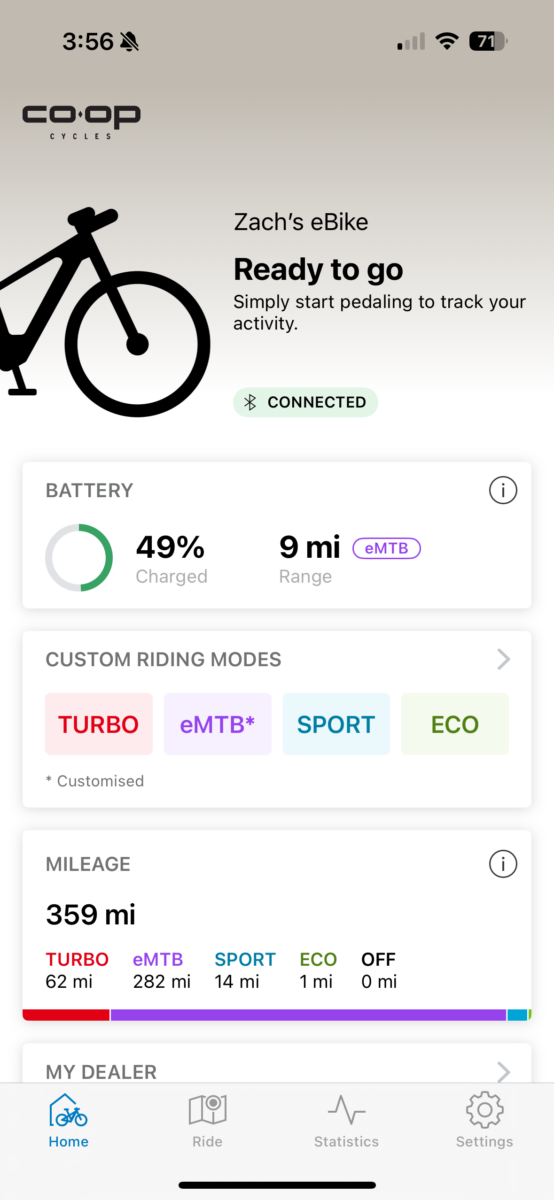
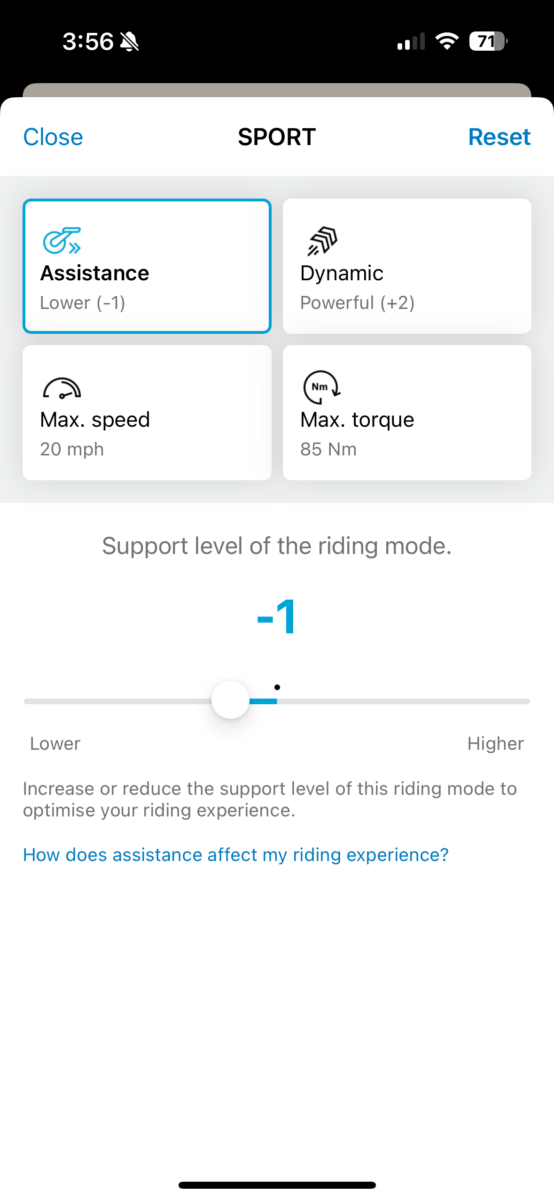
Initially, the fact that this bike was equipped with the Bosch Smart System was a pleasant surprise. Smart System bikes are compatible with the Bosch Flow app which is quite good. At this point, you’d think every major player in the ebike motor space would have their app connectivity and features completely dialed, but you’d be wrong. The Bosch app works exactly as you’d expect though, and allows you to connect to the bike to see charging and battery status, estimated range, total mileage, and includes customization tools to change ride modes.
There are four customizable settings including the assistance level, how dynamic the assist is, the maximum speed (up to 20 mph), and the maximum torque. These tools can be used to make the bike feel more or less powerful, extend battery life, and even act as a sort of “traction control” to keep the rear wheel from spinning out in loose conditions. You can even use the app to record your rides and see your metrics like elevation, speed, cadence, and how much power you’re putting into the REI eMTB.
If you pay for the Flow+ subscription (or use the 12-month free trial), you gain access to the anti-theft features. That includes acoustic & visual alarms, movement alerts with in-app notifications and location tracking. I’m assuming you can make it so the bike can’t be turned on either, but I haven’t tried this myself to verify.
REI eMTB Stats by the Numbers
- E-Bike Classification – Class 1: pedal assist up to 20 mph
- Assist Modes – Eco, Sport, eMTB, and Turbo
- Motor – Bosch Performance Line CX, the smart system
- Motor Type – Mid-Drive
- Motor Torque (Nm) – 85 Newton meters
- Battery Capacity (Wh) – 625 watt hours
- Battery Removable – Yes
- Charging Time (completely drained) – 5h
- Rated Continous Power – 250W
- Maximum Power – 600W
- Smart Walk Mode – Yes
Assist Modes
When it comes to selecting the level of assist, you have four modes to choose from: Eco, Sport, eMTB, and Turbo. Since the DRT e3.1 only has an LED Remote, using the app will allow you to see how the expected range changes as you cycle through the modes. Of the 339 miles of mountain biking I’ve had on the DRT e3.1, 268 of those have been in eMTB mode. It’s by far my favorite setting, and the app claims it’s actually more efficient than Sport mode.
Unlike the other modes which stay within a linear support level, eMTB mode is a dynamic setting that will provide support from the lowest level of Tour (160% support) to the highest level of Turbo (340% support). That support or assist is provided based on direct input from the pedals utilizing the bike’s torque sensor. The best way to explain it is that while you’re soft-pedaling through a tight switchback, the assist level is kept low. But when you exit the switchback and you get on the pedals to muscle out of the corner, the assist ramps up immediately. The result is power when you need it, and battery savings when you don’t.

With the included Bosch 4A charger, the battery can be fully recharged in about 5 hours. The plug on the REI eMTB is very easy to use, and when not plugged in, the bike has a waterproof rubber cover that should be snapped into place. It’s also worth mentioning that the system is UL 2849 certified which means it complies with potential new laws like the recently passed Initiative 663-A in New York.
The Build
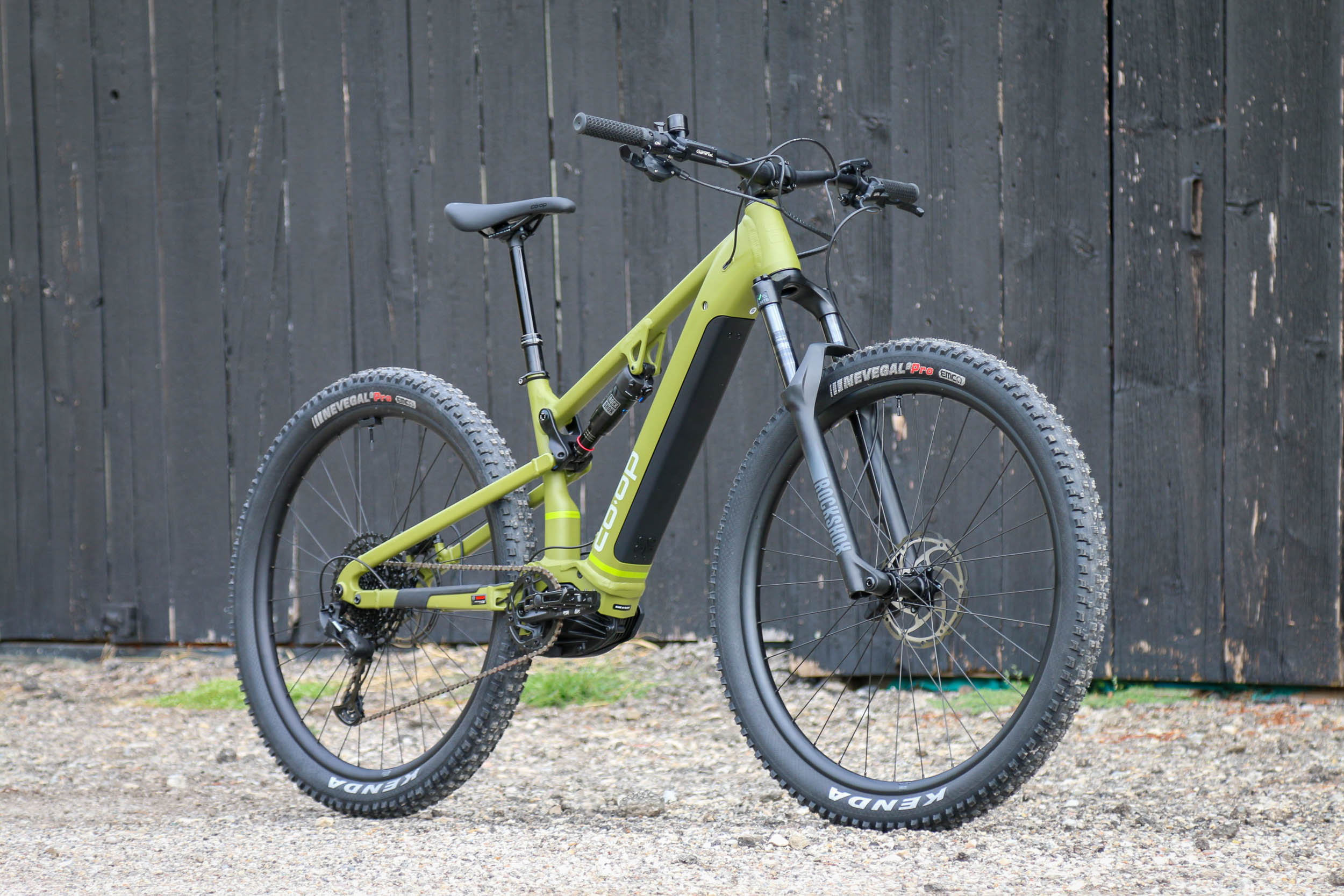
Most riders will likely pick their DRT e3.1 up from their local REI store. In that case, the bike will be fully built and ready for you to ride. For those who don’t live close enough to an REI, or would simply rather have it shipped to them for the $30 oversize shipping fee, you’ll get a bike that is mostly assembled – though you may still have to do some work with the included Park Tool multitool.
When my review sample showed up, there were a few things that needed attention right away. To start, the front brake caliper adapter was on upside down. The arrow should be pointing up, and it’s a simple fix of pulling the caliper, flipping the adapter, and bolting it back together.
I run the seat post pretty low, but the dropper post cable was far too long even if it was extended to the maximum height. This fix is a little more challenging and requires cable/housing cutters, but it’s still fairly easy.
After the first few rides, I noticed that no matter how much I tightened the headset, I couldn’t get it to stay tight. It turns out the steerer was just slightly too long, which there are two ways to fix – add another spacer, or cut down the steerer tube. I already had plenty of spacer stack, so I decided to cut the steerer and scooch down the starnut—perfect adjustment from then on.
Torque Those Lockrings
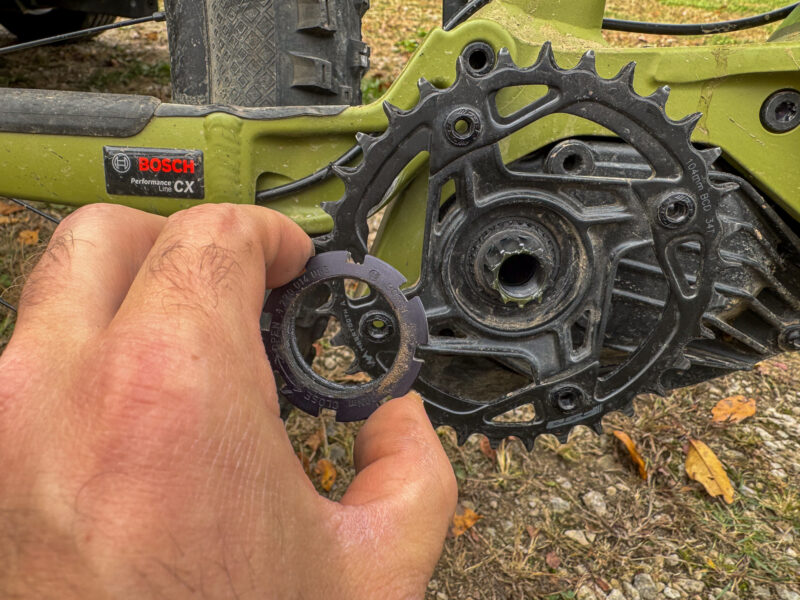
The last build issue didn’t present itself until I had ridden about 100 miles on the bike. During that ride, I looked down and thought “Huh, it looks like my chainring is crooked?”. The bike was still pedaling, but after I stopped to take a look I noticed that the chainring had come almost completely loose. The Bosch motor uses a spline for the chainring, and there is a locknut that threads down over the top of the ring to hold it in place.
It appears that the lockring had worked itself loose, possibly as a result of insufficient torque from the factory or lack of Loctite. After removing the crank arm, lock ring, and chain ring, I cleaned up the grease as best as I could and reinstalled the chainring. When I reinstalled the lockring, I added Loctite 243 which is a primerless version meant for situations where grease might be present. I torqued the lockring to the proper spec, and haven’t had an issue since.
As a result, I’d recommend having your shop check the lockring torque or do it yourself, and probably add some Loctite as well.
Except for the lockring issue, all of these issues are fairly common for any new bike. The better bike shops will have these all sorted out before a bike hits the showroom floor, but that’s not always the case. If you have an REI close by, it’s worth having them build the bike up to check for any issues, though the competent home mechanic shouldn’t have any problem here.
Sizing and Wheel Size
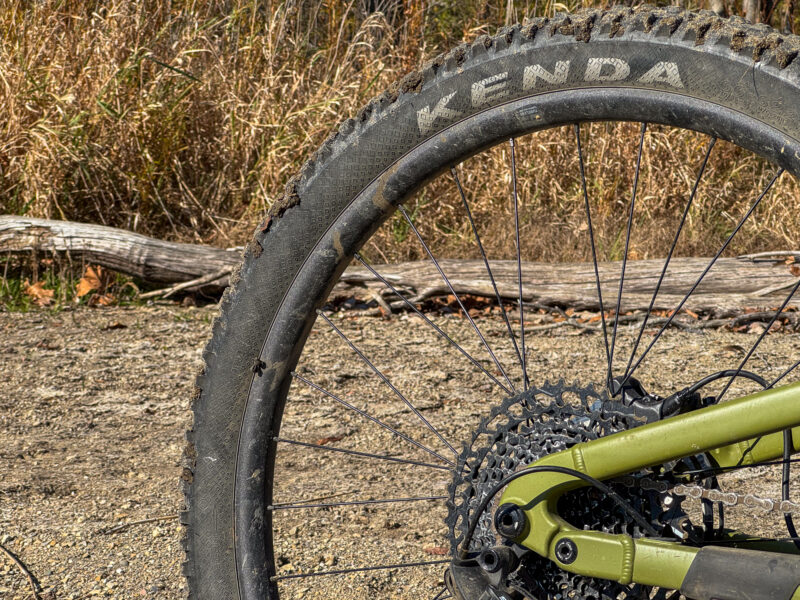
Depending on your frame size, you may be running 27.5 or 29″ wheels on the DRT e3.1. Both the XS and S frames come with 27.5 x 2.6″ wheels and tires, while the M-XL frame sizes come with 29 x 2.6″ wheels and tires. I was happy to see that the medium REI eMTB came with the bigger wheels and found that the 2.6″ tires were a great choice for the build.
Other than an under-inflated pinch flat, the Kenda Nevegal Pro 2 tires have been surprising. They’ve provided excellent traction in tricky fall conditions, even if it was a drier-than-average fall. They also seem to be impressively durable (the pinch flat happened after I forgot to air up after a few days), though that durability seems to come at the expense of cold-weather performance. If you plan on riding this bike in the winter, I’d recommend switching out to a true winter tire like the 45NRTH Wrathchild Trail.
REI eMTB Geometry

In terms of geometry, the e3.1 is fairly modern but with a conservative reach making it comfortable for beginners without alienating more experienced riders. The highlights include a 66º head tube angle and 77.4º seat tube angle with a 450mm reach and 441mm chainstays for a medium.
Rider Stats
- Rider Height – 5’8″
- Rider Weight – 159lb
- Rider Age – 38
- Size tested – Medium
Who Makes the REI eMTB?
The Co-Op DRT e3.1 feels like a high-quality bike, and the stickers on the box that suggest it came out of the Giant factory support that feeling. REI has not confirmed that Giant manufactures their eMTB, but the Giant Manufacturing Co. label with the serial number all but confirms it.
More Miles or Time on the Bike? Both!
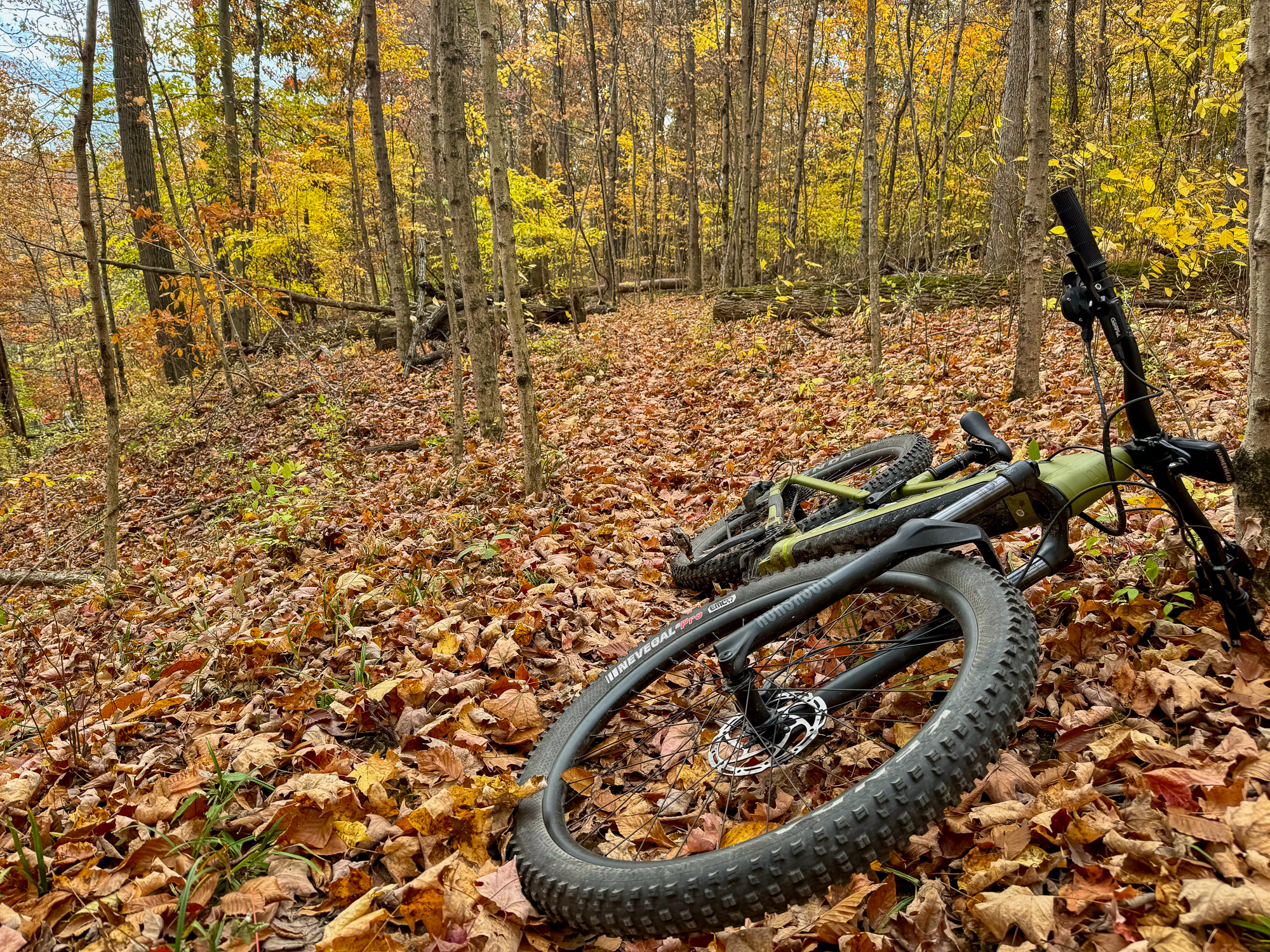
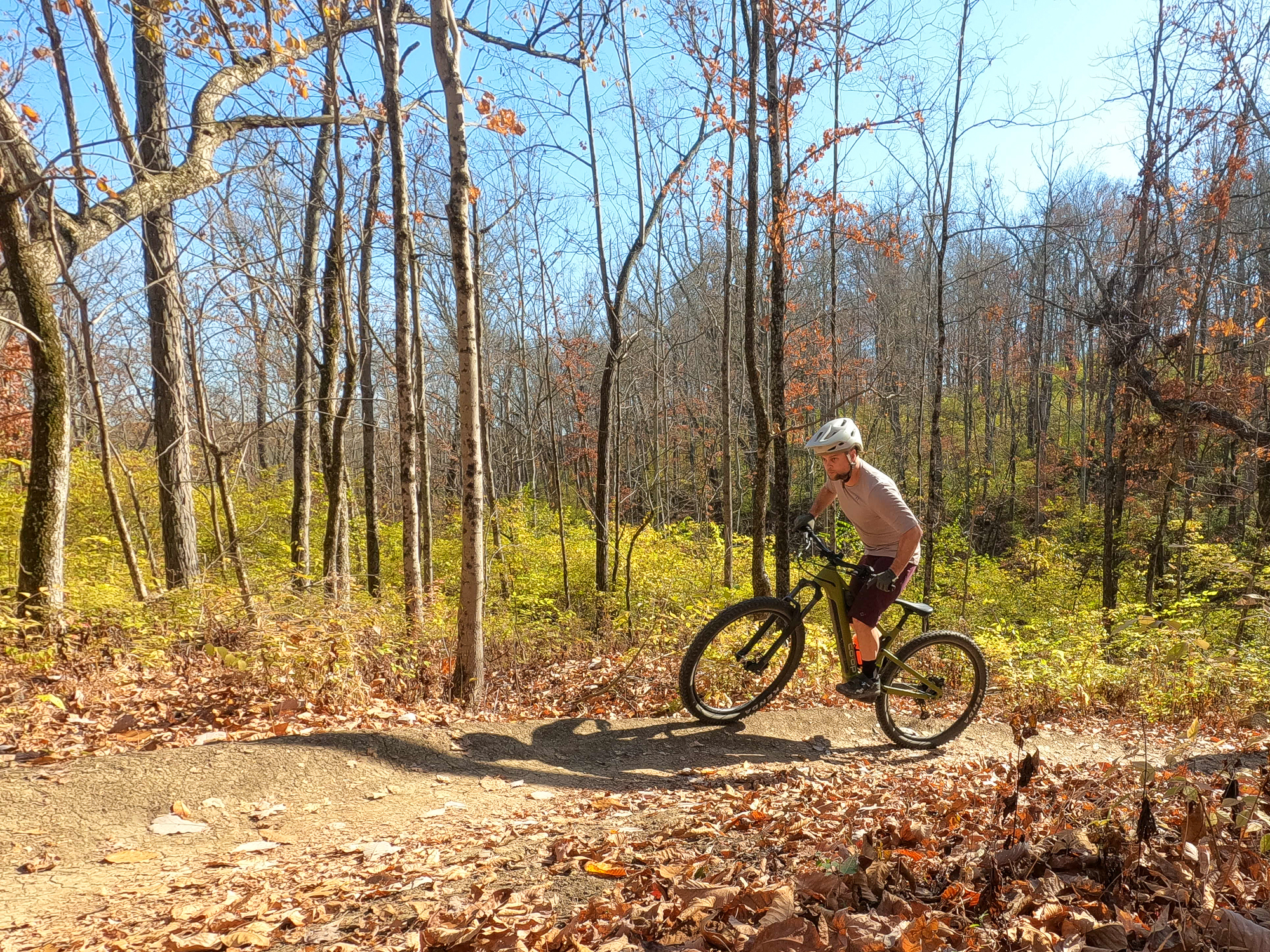
When the DRT e3.1 arrived, it was heading into the fall riding season – my absolute favorite. But it’s also the point of the year where the toll of the year’s riding starts to catch up with me. I didn’t know it at the time, but having access to an eMTB meant that I would get in a lot more hours of riding this fall. Notice I said hours and not miles. It’s obvious that an ebike will probably allow you to ride more miles, but I found it increased the miles and hours. But for October & November combined, I rode 36h in 2021, 29h in 2022, and 60h this year.
Those aren’t all just ebike miles either. Despite sometimes putting in back-to-back-to-back big ebike days on our most demanding trails, I would still have the energy to go out and do gravel rides on a regular bike the next day.
So it’s obvious that having access to an eMTB means more trail time for me, but that isn’t model-specific. What about the DRT e3.1?
Solid Spec
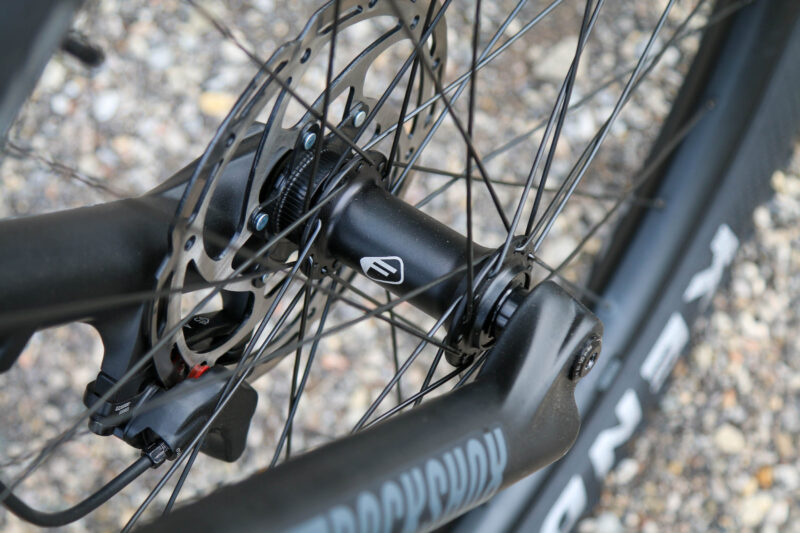
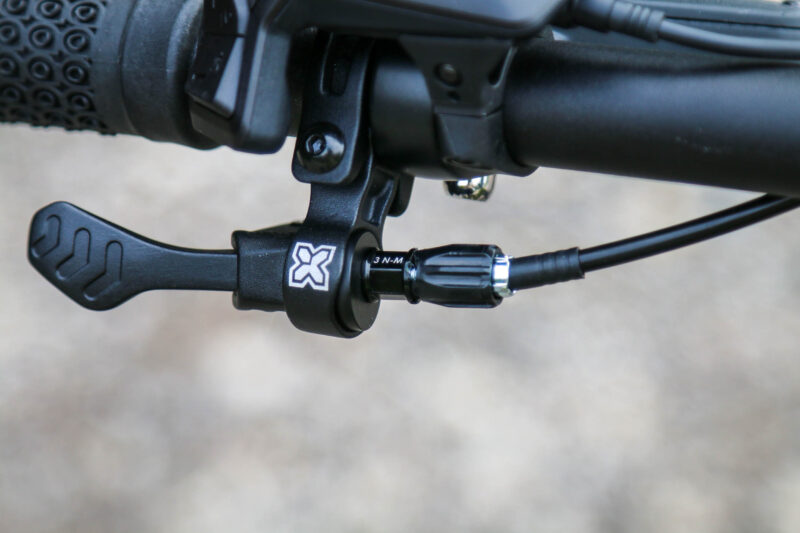
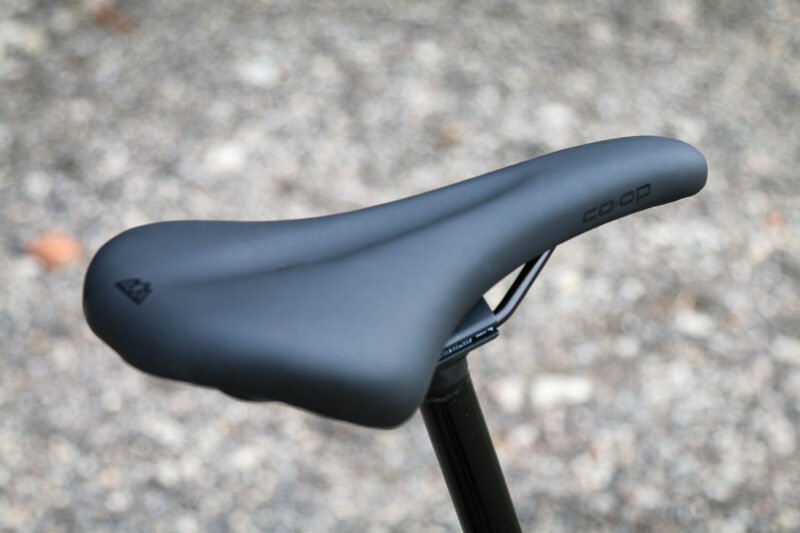
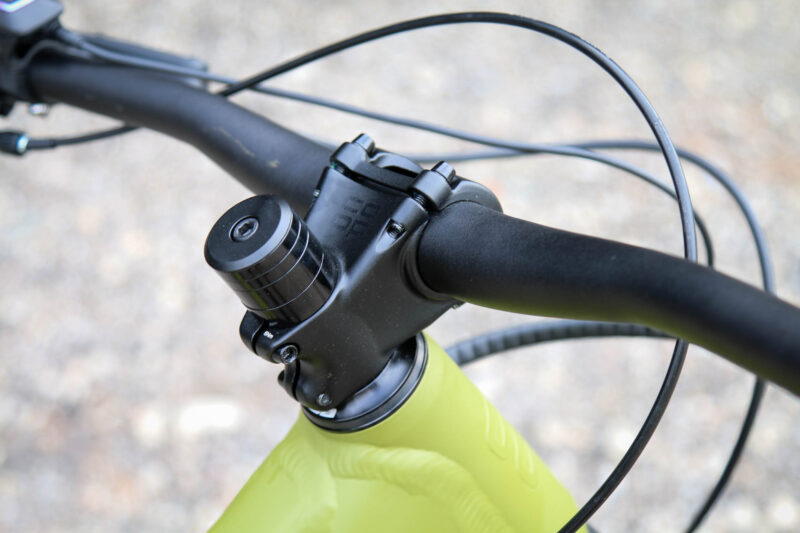
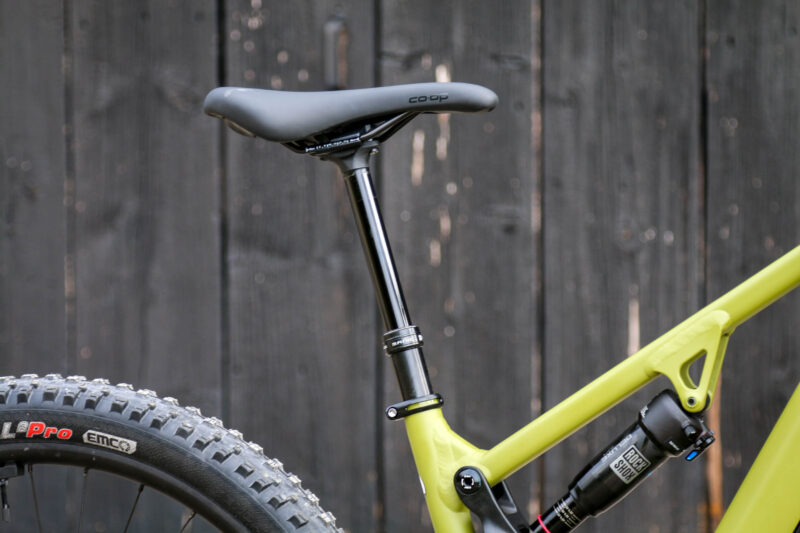
Admittedly, when I was first checking out the e3.1, I somewhat expected it to be good but it would probably need some quick upgrades. I was very pleasantly surprised to find a bike that is very well-equipped right out of the box. After setting saddle height and adjusting the bar and controls to my liking, there wasn’t much left to do other than ride.
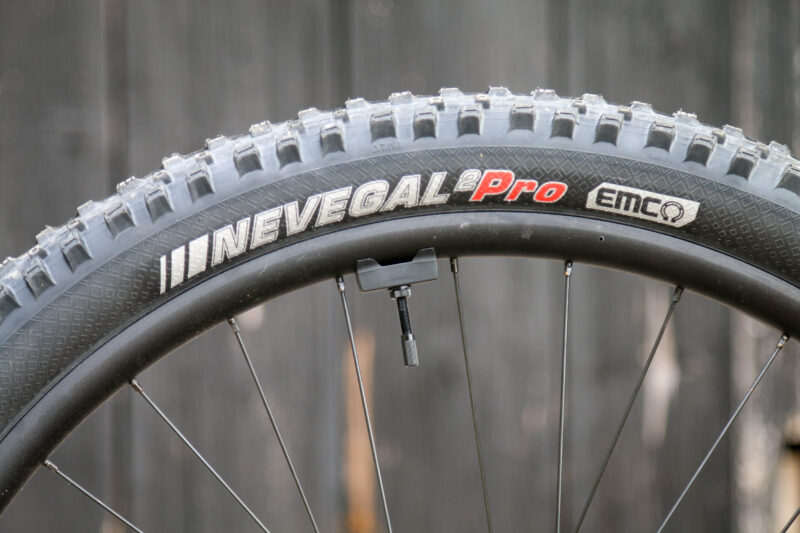
Well, technically, I also converted it to tubeless first as well. The REI eMTB comes stock with taped rims and tubeless Kenda Nevegal Pro 2 tires. Inside those tires, you’ll find standard inner tubes, so if you want to go tubeless you’ll need to add tubeless valves and tire sealant. Note that due to the sensor on the rear rim, you’ll need a longer valve stem. I added some of my favorite Fillmore valves, and some sealant, and the tires popped into place without any hassle at all.
Suspension
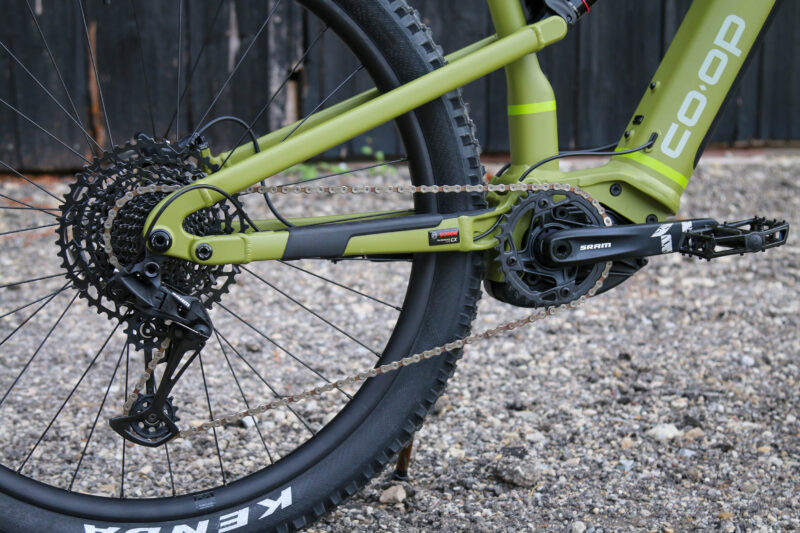
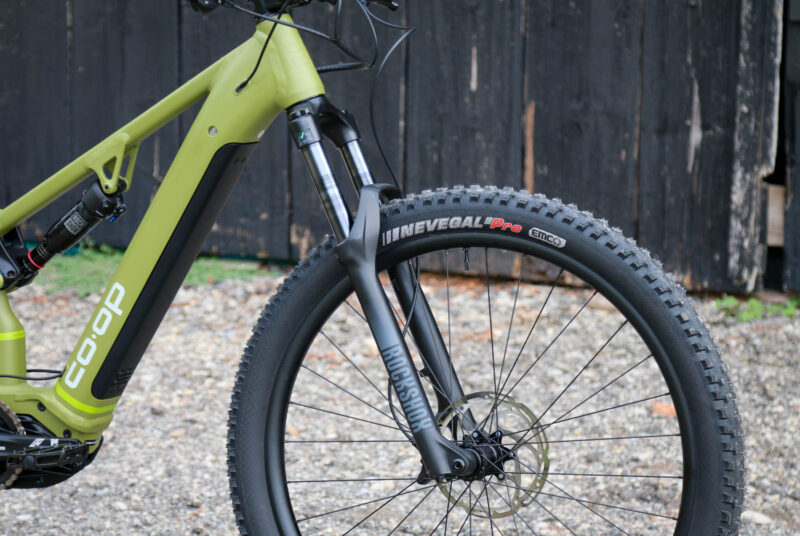
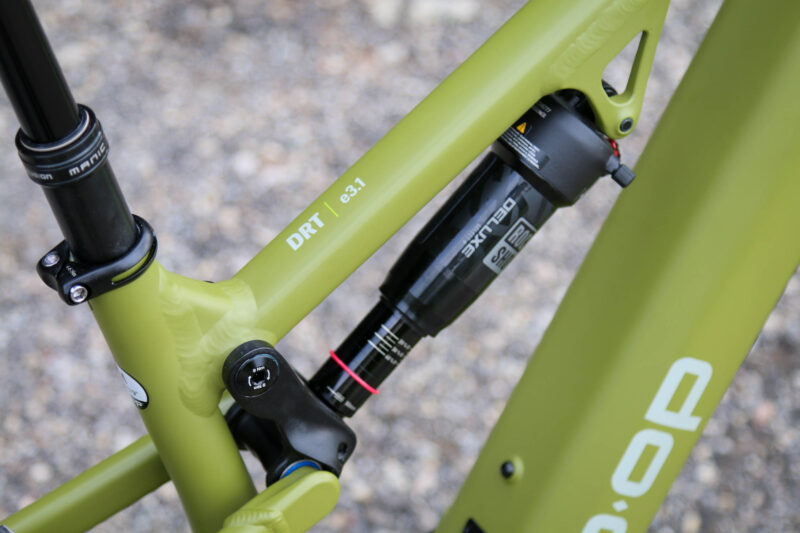
Running a proven Horst link setup with a RockShox Deluxe Select Plus RT rear shock, the 130mm of rear travel isn’t going to ‘wow’ experienced riders. But what it lacks in sophisticated suspension trickery, it makes up for in consistent, reliable performance. The same could be said for the RockShox Recon Silver RL Solo Air fork – there are many higher-end forks out there, but the ebike-rated Recon is up to the task.
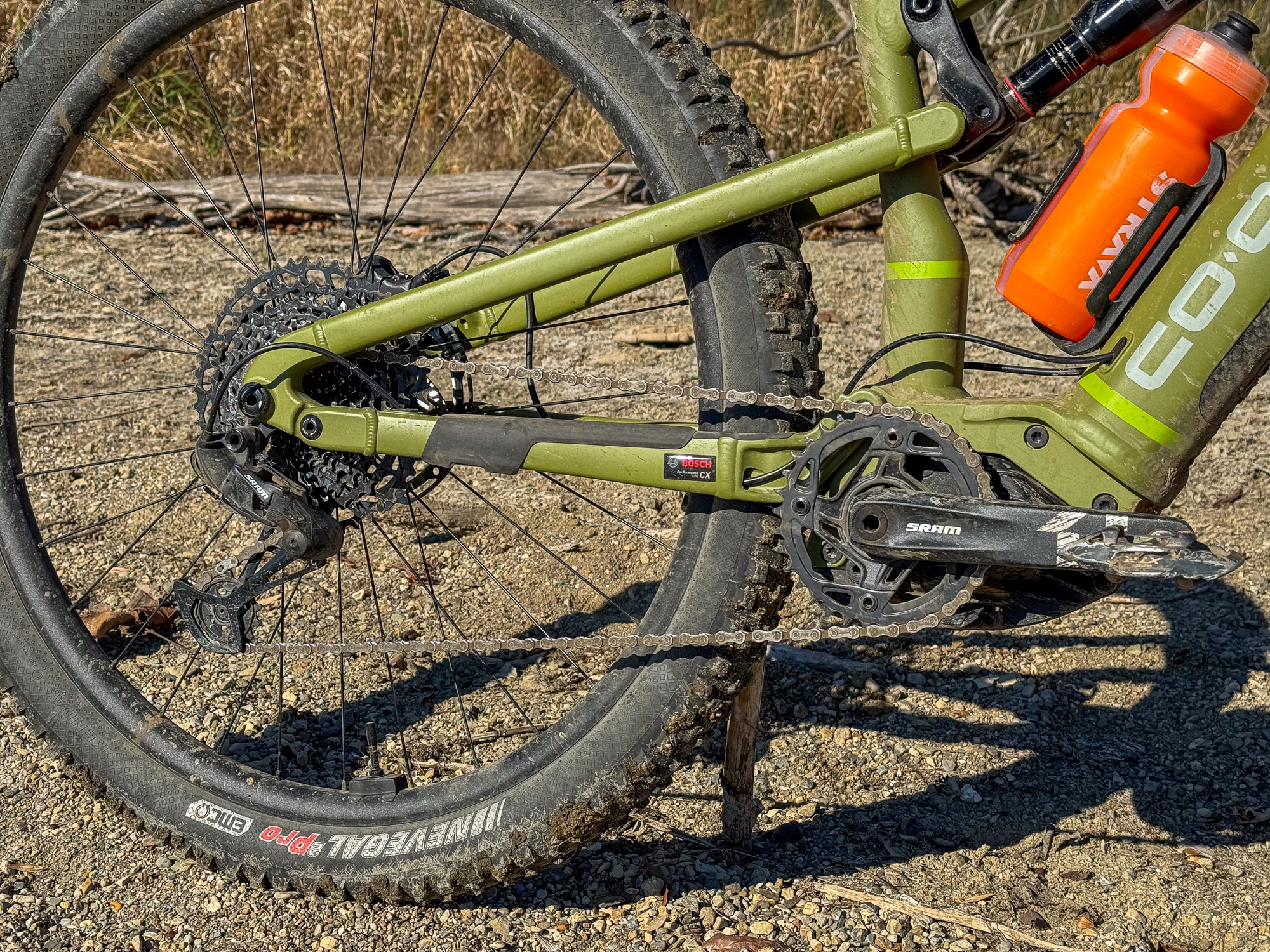
We’ve also read comments on the internet that the SRAM SX Eagle 1×12 drivetrain wouldn’t be up to the task, but so far that appears completely unfounded. I’ve purposely tried to shift poorly to torture the drivetrain as much as possible and it still hasn’t missed a beat. That includes a handful of crashes as well. Is it going to be as robust as a new SRAM Transmission? Probably not, but again, the components are more than capable.
It’s worth mentioning that the frame does have a SRAM UDH making it Transmission-compatible for future upgrades.
Accessories
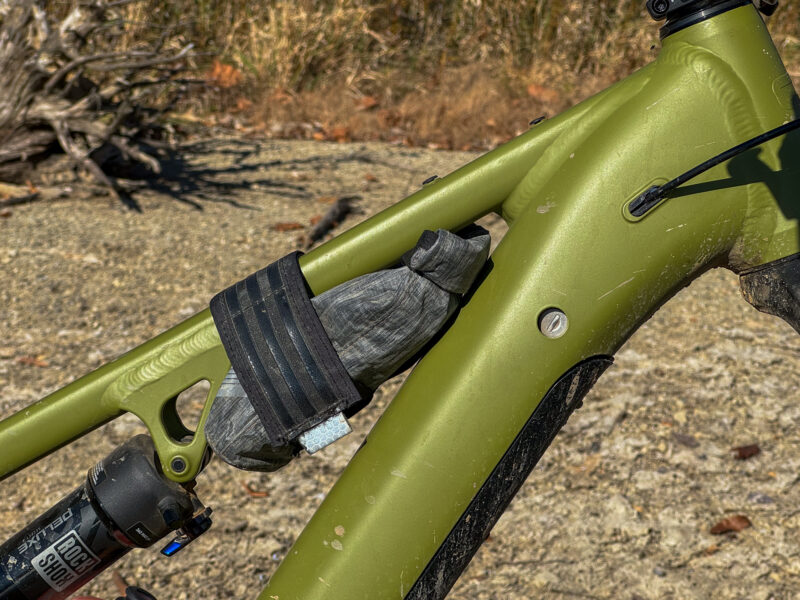
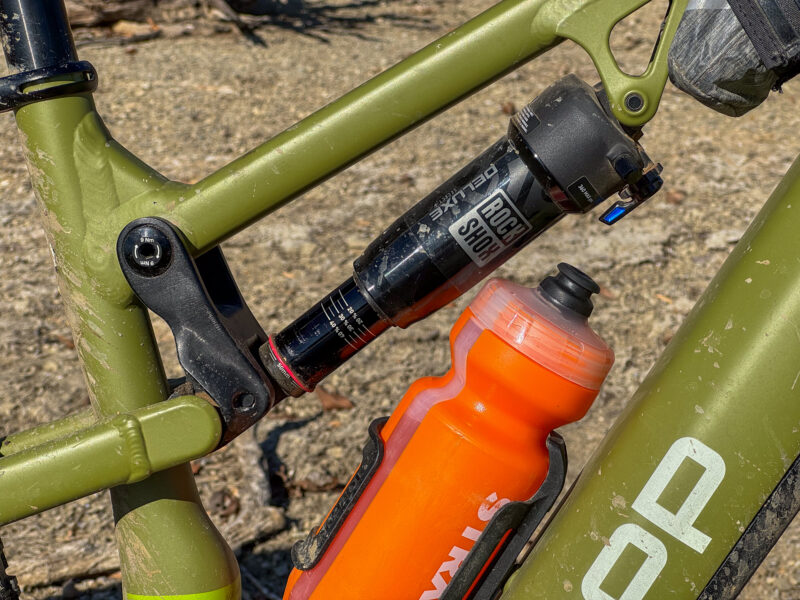
With a standard side-load water bottle cage, the frame has room for most mid-sized water bottles. There are also top tube mounts for additional storage, though I chose to mount a WTC B-RAD rolltop accessory bag under the top tube for my tools and spares.
Brakes
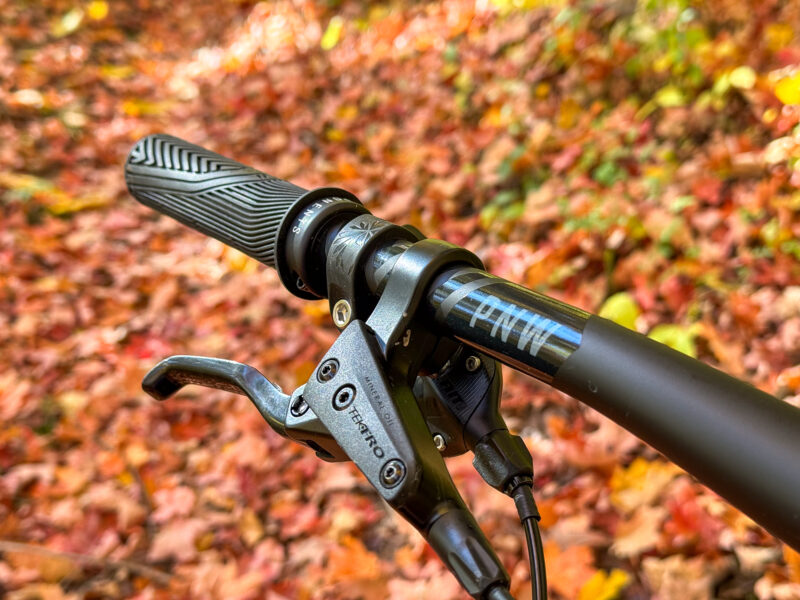
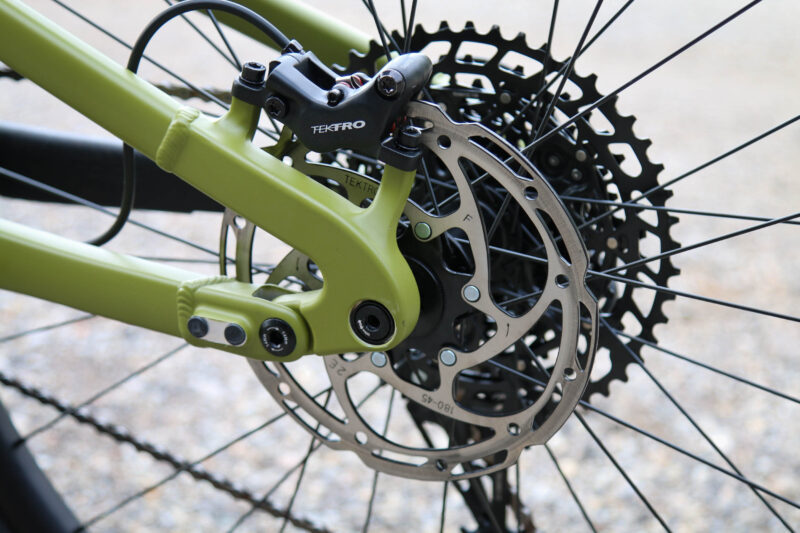
When it comes time to slow down a 55lb ebike, brakes are important. I was very happy to see the Tektro 4-piston hydraulic brakes with thicker 2.3mm rotors on this build as they have impressive power and modulation. If you’re an aggressive rider or on the heavier side I would suggest upgrading to a 200mm rotor on the front of the bike. The 180mm rotors front and back are adequate, but more front braking power could be useful in certain situations.
There was one upgrade I made to the bike, which was the result of needing to test out components more than the bike needing it. Swapping out the aluminum handlebar for the PNW Loam Carbon bar shown above did result in a slightly more comfortable ride up front.
With all the original components, the complete build wasn’t quite 55lb for a medium, coming in at 54.7lbs. If you go tubeless, you stand to drop almost 0.5lbs at 54.23lbs with a heavy sealant pour.
On the Trails
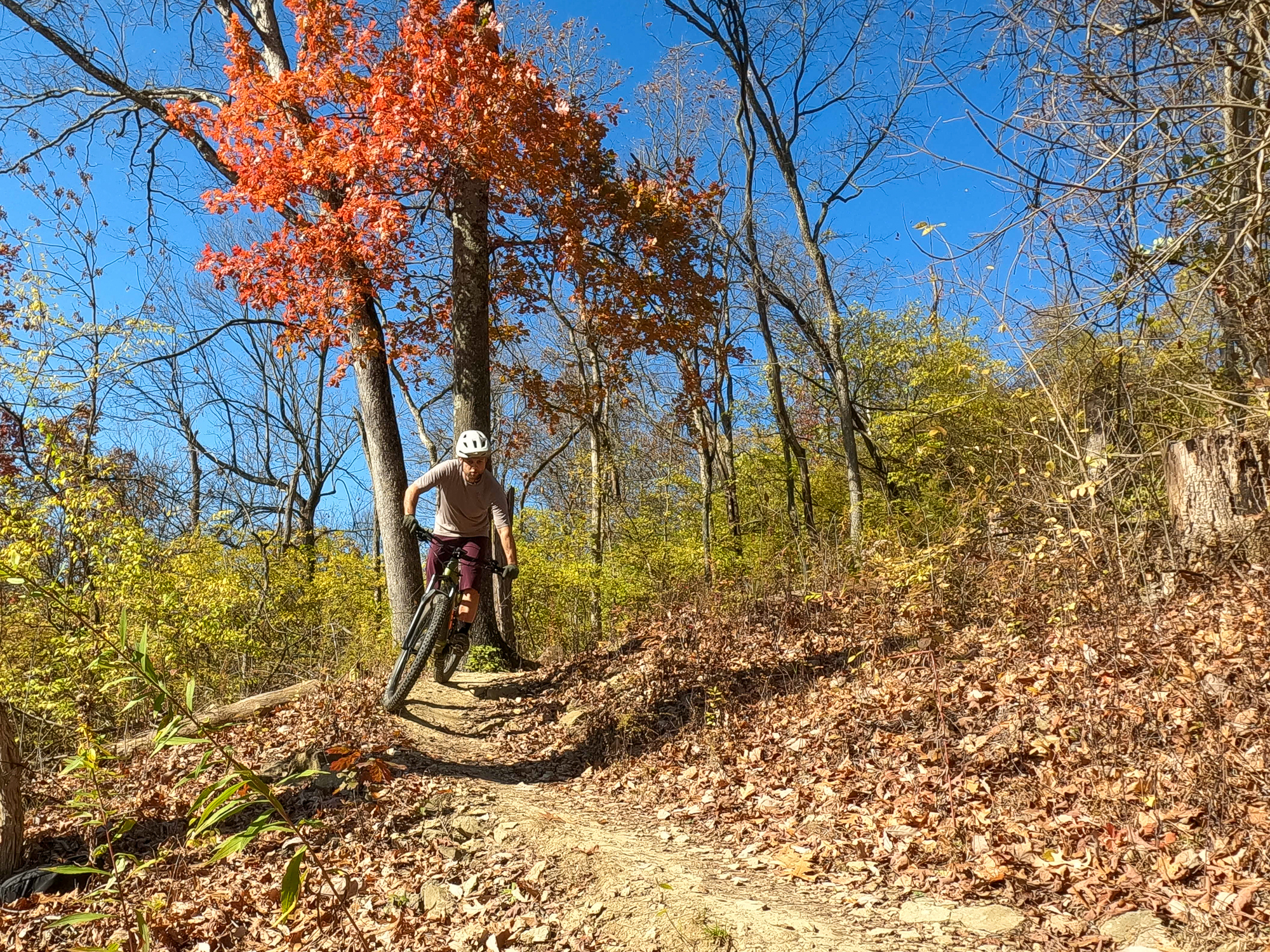
At this point, I’ve ridden the e3.1 on everything from jumpy flow trails to longer backcountry epics – it’s a bike that feels comfortable in a wide variety of terrain. With 130mm rear travel and 140mm travel up front, the bike is solidly in the Trail category. While there are better bikes for DH-focused riding, I’ve ridden all of our (fairly mellow) DH-specific trails locally just fine.
As mentioned, most of that riding has been in eMTB mode – it just feels the most natural and provides more than enough assistance in any situation without feeling like the bike is doing all the work.
Battery Life / Range
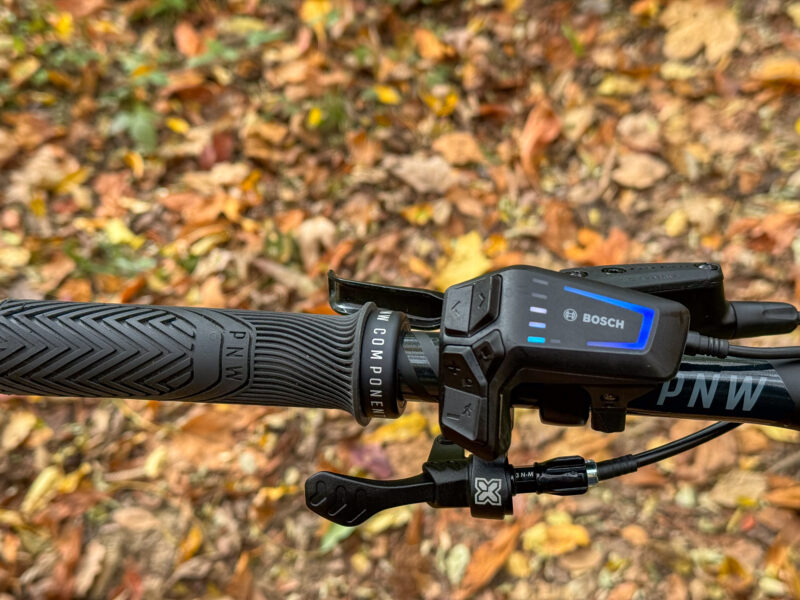
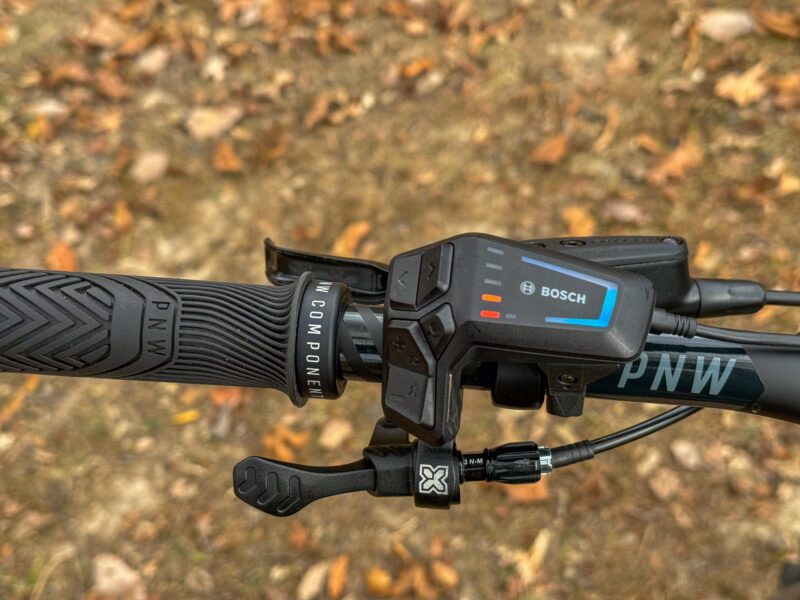
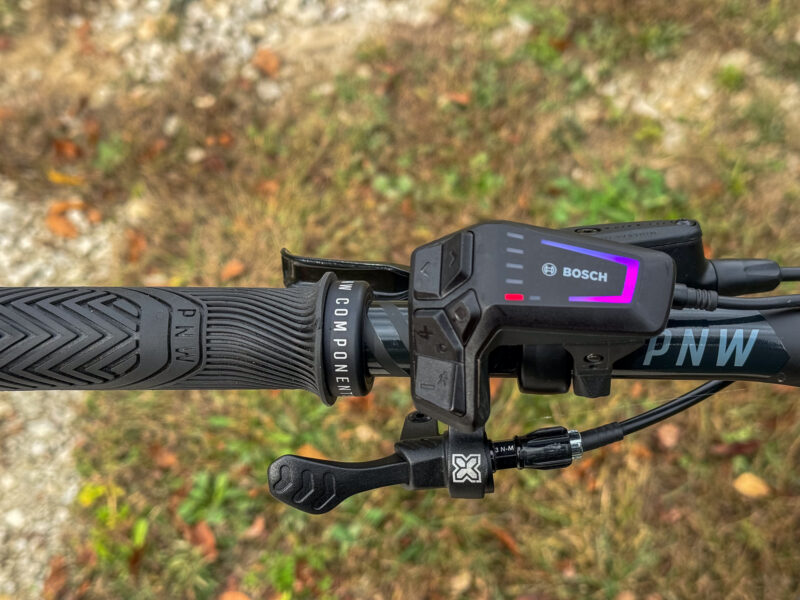
While riding in eMTB mode, on average I have been getting about 26-28 miles to a full charge which has been very close to the estimated range on the Flow app. When connected to the bike, the range estimate will change based on the assist mode, and it will change over time based on your use. I always found the estimated range to be optimistic by a few miles, but not by much. Most of my testing has been on technical trails with a lot of climbing, though not a lot of elevation. The rides where I got 26-28 miles on eMTB mode had about 2,500′ of elevation gain. On one of my rides with more elevation, I clocked 24 miles and 3,488′ of climbing, but didn’t have time to fully empty the battery.
When fully charged, the LED remote will show five blue bars. As you deplete the battery, those bars turn white and then disappear completely one by one. Once the battery level drops to 30%, the last two bars will turn orange. Keep riding, that second orange bar will disappear and then a single red bar will light up telling you that there’s 10% battery left. From this point, there are no more warnings – eventually, the motor will cut out when the battery dies, and that red bar will flash. At this point, hopefully, you don’t have far to ride because this is not a fun bike to pedal without any assist.
Phone as Display
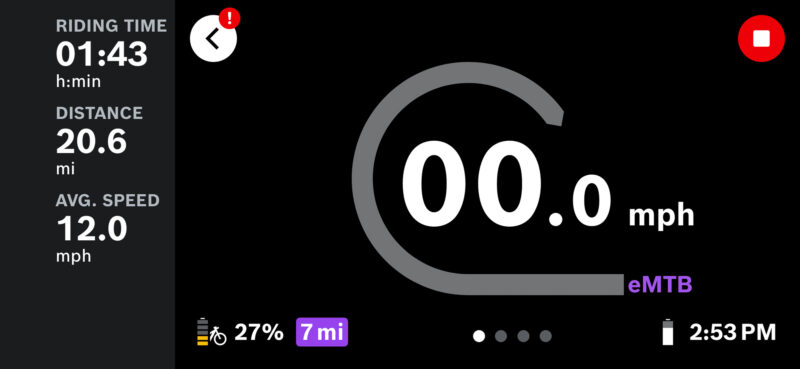
If you want more system detail than the LED remote provides, you can also use the Flow app to turn your phone into a display screen mounted to your bars. In this mode, there are a lot of metrics that can be displayed including speed, battery percentage, remaining range, time of day, riding time, distance, etc.
While the Bosch Performance Line CX isn’t the quietest motor I’ve ridden, it is among the quieter full-power options. The bike is wonderfully quiet as well – no rattling cables or components to annoy you while rolling down the trail.
REI eMTB Pricing & Availability
The retail price of the Co-op Cycles DRT e3.1 is $4,999. If you’re a Co-op member though, you stand to get about $499.90 of that back as reward dollars. Those dollars have to be spent at REI, but there’s plenty of other bike stuff you can spend it on (including valve cores and sealant). If you’re not already a member, make sure to buy a $30 lifetime membership before purchasing the bike.
The bike includes one year of free adjustments and in-store assembly, but REI Co-op members also get an additional year of free adjustments (2 years total), free flat repair labor, and 20% off shop services.
Currently, the Co-op Cycles DRT e3.1 is available in all sizes, all in the Bamboo colorway pictured above.
Takeaway
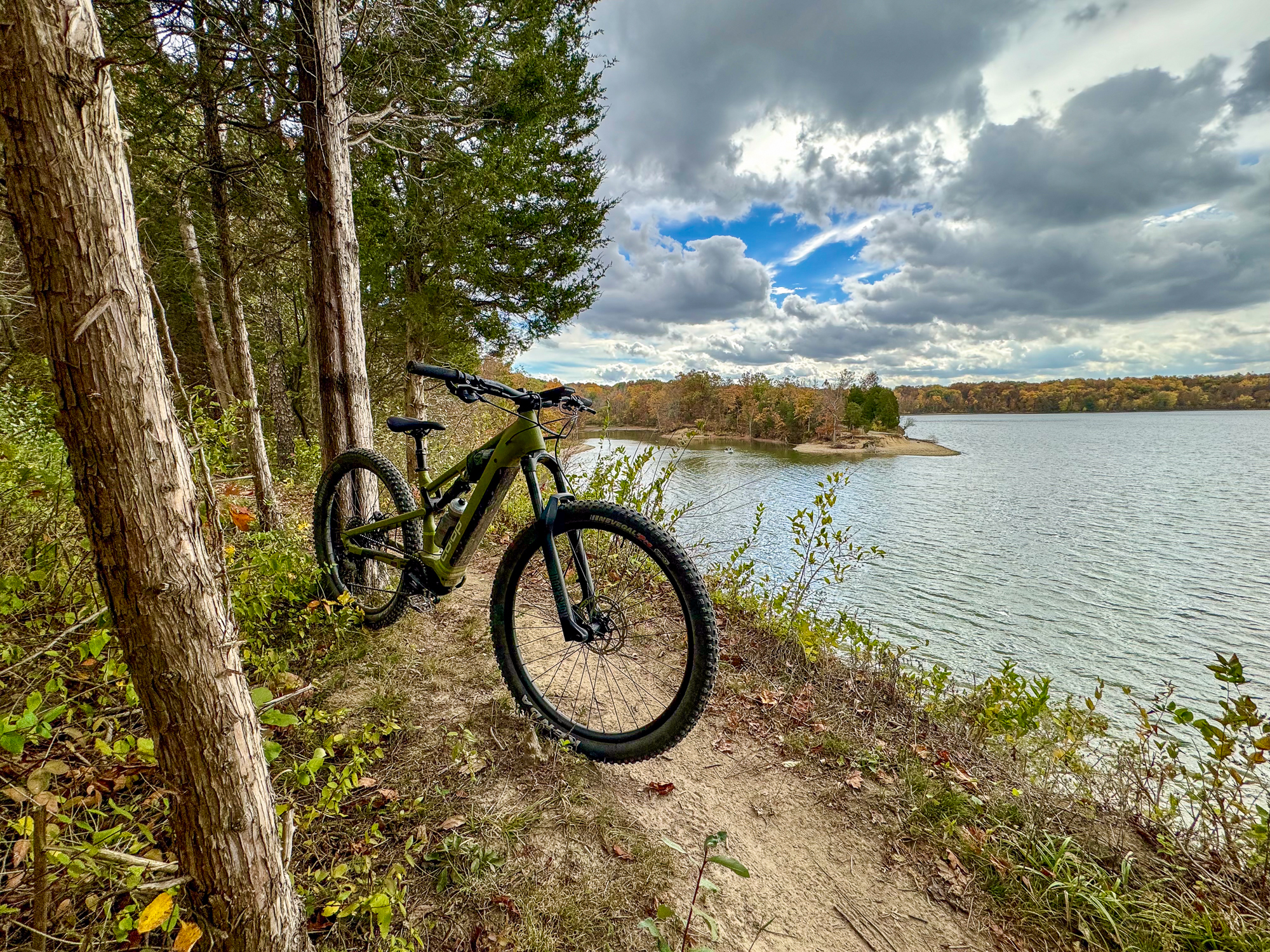
Overall, the Co-Op DRT e3.1 delivers exactly what you want out of a full-power ebike. The aluminum frame provides a solid foundation for one of the best ebike systems on the market. At $5k, the e3.1 offers a large 625wh battery along with the Bosch Performance Line CX drive system without skimping on other components. You would never know that this was REI’s first attempt at an eMTB, and as a result, it further establishes the Co-op bike brand as a genuine brand to consider for your next bike.
